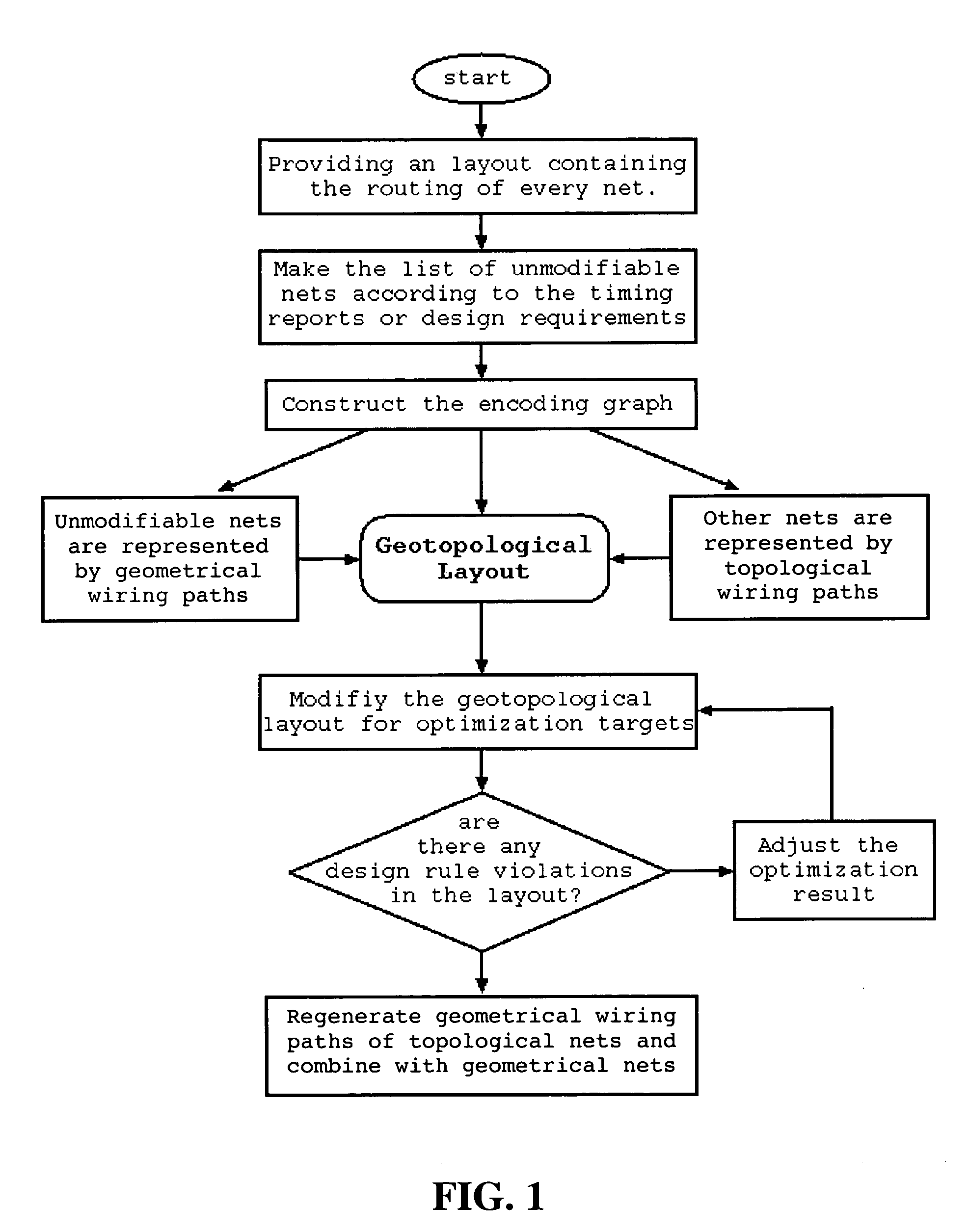Routed layout optimization with geotopological layout encoding for integrated circuit designs
a geotopological layout and integrated circuit technology, applied in the field of integrated circuit design and postlayout optimization, can solve the problems of product lateness, loss of revenue and market share, and difficulty for ic designers and engineers, and achieve the effect of being easily modifiabl
- Summary
- Abstract
- Description
- Claims
- Application Information
AI Technical Summary
Benefits of technology
Problems solved by technology
Method used
Image
Examples
Embodiment Construction
[0024]In the following detailed description, like numbers and characters may be used to refer to identical, corresponding, or similar items in different figures.
[0025]An effort has been made to modify the routed layout through the topological representation of the layout, or the topological layout, see, Zhang, S. and Dai, W. “TEG: A New Post-Layout Optimization Method,” IEEE Transactions on Computer-Aided Design of Integrated Circuits and Systems, Vol. 22, No. 4, April 2003, pp. 1–12, the content of which is incorporated herein by reference in its entirety, hereinafter referred to as the “topological approach”. Readers are directed to the article for further teachings on underlying operations such as layout updates, design rule check, wire representations, etc.
[0026]In the topological approach, a topological layout is extracted from the geometrical layout. Specified layout modifications, such as wiring sizing and spacing or rip-up and reroute, are then performed on the topological l...
PUM
 Login to View More
Login to View More Abstract
Description
Claims
Application Information
 Login to View More
Login to View More - R&D
- Intellectual Property
- Life Sciences
- Materials
- Tech Scout
- Unparalleled Data Quality
- Higher Quality Content
- 60% Fewer Hallucinations
Browse by: Latest US Patents, China's latest patents, Technical Efficacy Thesaurus, Application Domain, Technology Topic, Popular Technical Reports.
© 2025 PatSnap. All rights reserved.Legal|Privacy policy|Modern Slavery Act Transparency Statement|Sitemap|About US| Contact US: help@patsnap.com



